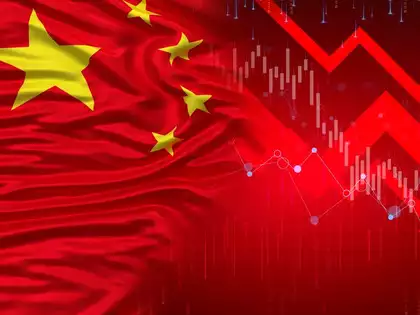Credit ratings agency Moody’s has reaffirmed China’s sovereign rating at A1 with a ‘negative’ outlook, citing persistent global trade uncertainties and elevated export tariffs imposed by the United States. The decision, announced on Monday, comes despite recent signs of stabilisation in China’s domestic financial risks and policy reforms.
The outlook, first downgraded from ‘stable’ to ‘negative’ in December 2023, reflects renewed concerns around external headwinds rather than internal debt pressures. “The drivers of (China’s) negative outlook have changed,” Moody’s said in a statement attributed noting that earlier risks linked to local government debt and the financial health of state-owned enterprises have “receded following concerted government policy.”
China’s Finance Ministry reacted cautiously, calling Moody’s move to maintain the current rating “a positive reflection of the prospects for China’s economy,” as cited by ET. However, global financial observers remain wary.
Trade Tensions Cloud Economic Forecast
China and the United States reached a temporary tariff truce earlier this month, aiming to ease the pressure on global supply chains. But Moody’s warned that “uncertainty around future trade restrictions and global trade flows remains,” and added, “as a baseline, we expect tariffs on Chinese exports to major markets will remain higher than at the beginning of the year.”
This follows former US President Donald Trump’s decision to impose 145 per cent tariffs on select Chinese exports last month—a move that rattled financial markets and prompted immediate diplomatic engagement between the two nations.
Domestic Reforms Not Enough?
Although China has enacted several structural and fiscal reforms to contain local government debt and bolster state-owned enterprises, the ripple effects of high external tariffs and strained global ties are outweighing these gains in the eyes of credit analysts. The market is now closely monitoring other agencies such as S&P and Fitch, the latter of which downgraded China’s sovereign rating by one notch to ‘A’ in April, citing rapid debt accumulation and deteriorating public finances.
Investors and economists are also watching for how Chinese exports respond in the coming quarters, particularly in sectors vulnerable to tariffs such as electronics, machinery, and textiles.
Political Overhang
Despite recent trade diplomacy, geopolitical friction—particularly over issues such as Taiwan, intellectual property, and tech sanctions—continues to cloud China’s long-term trade outlook. Analysts believe the recovery of investor confidence will largely hinge on whether these disputes escalate or resolve in the coming months.
For now, the retention of the A1 rating offers a limited reprieve but keeps China under close scrutiny as global capital markets weigh risks in an increasingly fragmented economic landscape.









































